2009 Kawasaki Jet Ski Lineup Unveiled
Kawasaki fires latest salvo in horsepower wars
You knew it wouldn’t be long before Kawasaki answered the latest challenge issued by Sea-Doo in the ongoing horsepower wars. The 260-horsepower 2009 Jet Ski Ultra 260X is now the industry benchmark for power among the major personal watercraft manufacturers.
Kawasaki introduced the craft to its dealers and the media at 2008 Kawasaki Dealer Meeting in Dallas, Texas on Sept. 20. This comes only two years after the original horsepower monster was introduced – Ultra 250X.
According to Kawasaki, increased compression ratio, new high-lift cams and revised ignition timing help boost the 1,498cc engine’s output by 10 horsepower. A new impeller translates that enhanced power into thrust and Kawasaki says the new 260X can accelerate harder than ever.
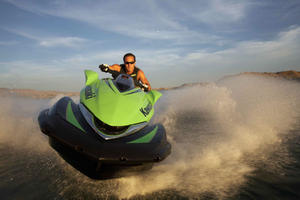
Thanks to its Roots-type supercharger, Kawasaki says the Ultra 260X is able to produce power comparable to a normally aspirated high-performance engine twice its size. The high-volume, direct-drive, Roots-type supercharger force-feeds the engine two liters of air with every revolution, providing what Kawasaki calls a stable supply of high-pressure air at all rpm, from idle through redline.
“This produces a smooth, linear torque curve that is perfect for accelerating this Jet Ski watercraft hard, all the way from a standstill through its breath-taking top-end,” Kawasaki says in a release.
Because the 260X’s supercharger compresses the air to a maximum boost pressure of 11.4psi, the intake charge can get extremely hot, which can rob the engine of its high power output. To solve this problem, Kawasaki uses a large-capacity intercooler which is designed to bring the pressurized air back down to ambient temperature or even less.
The Ultra 260X’s 155mm jet pump was designed to deliver what Kawasaki calls predictable thrust and good traction, even in rough water. Kawasaki says its three-blade impeller delivers high performance smoothly and quietly. The revised impeller design features blades with less twist which is designed to better convert the increased output from the engine into acceleration performance.
According to Kawasaki, the pump’s eight guide vanes smooth the flow of water from the impeller, helping add to the ‘traction’ for more powerful propulsion. The pump also incorporates a groove from the center to the rear of the ride plate which is intended to make it easier to hold a stable heading for straight line riding.
Outside of power, the rest of the craft is largely unchanged from the Ultra 250X. The race-developed hull is the same and as we mentioned in our review of the Ultra 250X, the. 22.5-degree, deep-vee profile of the hull combines with the boat’s considerable weight to beat wind-blown chop into submission. It’s a great fantastic straight-line performer at any speed.
The 2009 Kawasaki Jet Ski Ultra 260X will retail for $11,999, which is considerably less than Sea-Doo’s 255-horsepower RXT-X ($13,699) and Yamaha’s WaveRunner FZS ($12,899).
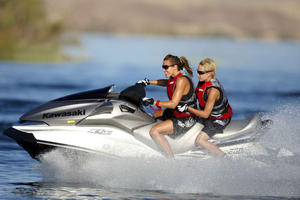 An extra $300 will net a touring seat and a different paint scheme.
An extra $300 will net a touring seat and a different paint scheme.
Kawasaki also introduced the 2009 Jet Ski Ultra 260LX ($12,299) which it is calling the ultra touring personal watercraft. It features the same 260-horsepower engine and deep-vee hull of the Ultra 260X, but adds a luxury touring seat.
The Jet Ski Ultra LX was also updated for 2009 with a luxury touring seat and it will retail for $10,999.
With the economy on the downturn, Kawasaki decided to create a new entry-level craft and introduced the Jet Ski STX. It’s based on the popular Jet Ski STX 15F and has the same 160-horsepower engine, hull and storage capacity.
Kawasaki’s dealers responded very favorably when the $7,899 price tag of the STX was revealed at the meeting.
According to Kawasaki, the STX was designed to offer introductory model cost savings without sacrificing power and handling. To trim the cost, Kawasaki stripped off all but the essentials off the STX 15F – namely the mirrors, reverse bucket and swim step. It also has a one-piece seat instead of the two-piece seat found on its cousin.
Related Reading:
2008 Kawasaki Jet Ski Ultra 250X Review
2008 Kawasaki Jet Ski Ultra LX Review
Get PersonalWatercraft.com in your Inbox!
Like PersonalWatercraft.com on Facebook
Comments
Most Popular

2025 Yamaha JetBlaster PRO 2-Up Review

Remembering the Sea-Doo XP

2024 Kawasaki Jet Ski STX 160X Review

2024 Yamaha GP HO Review

2017 Kawasaki Jet Ski Ultra 310LX Review




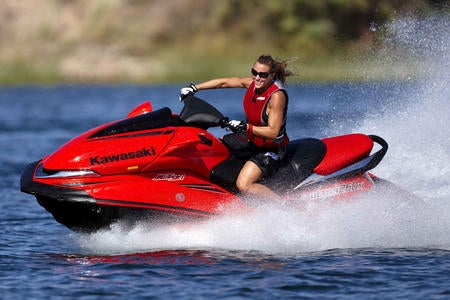
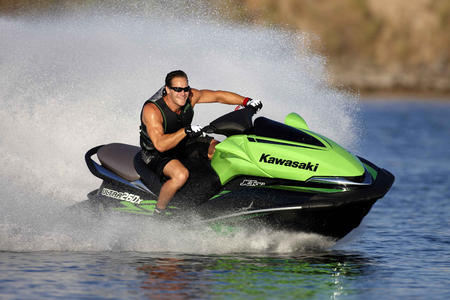
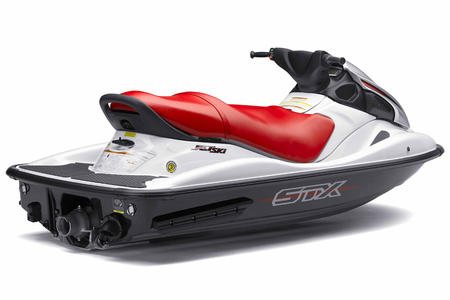







 Your Privacy Choices
Your Privacy Choices